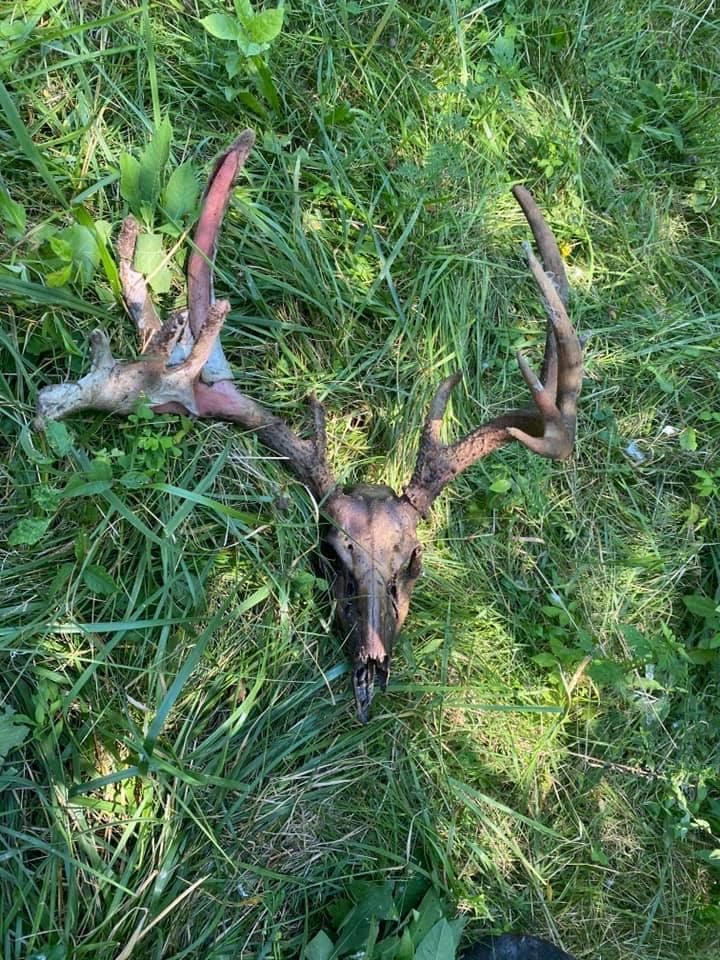Patoka Sportsman 9-12-20
Patoka Sportsman 9-12 & 9-13-20
Indiana DNR has launched a new website for public reporting of sick or dead wildlife. The new online tool is designed to collect information about Indiana wildlife that appears sick or has died without an apparent cause. Reports are added to an active database that helps DNR track wildlife health over time and detect disease outbreaks. The form can be found at on.IN.gov/sickwildlife. Individuals are encouraged to report fish or wildlife displaying odd behavior or signs of disease. The information gathered from this website allows biologists to monitor diseases that may be affecting fish or wildlife in the state, including epizootic hemorrhagic disease (EHD), avian cholera, and white-nose syndrome, among others. A biologist may contact the reporter if a sample for disease testing is needed. The DNR is especially interested in: Incidents involving the death of five or more animals, Recurring deaths of animals in the same location over a period of time, Deer with signs that may indicate chronic wasting disease (CWD) such as emaciation, staggering or standing with poor posture, salivating excessively, or carrying their head and ears lower than normal. More information about CWD can be found at IN.gov/cwd. Deer with signs that may indicate EHD such as death in or near water, loss of appetite and wariness, swelling around the head and neck, increased respiration rate, excessive salivation, rosy or bluish color of mouth and tongue. Learn more about EHD at IN.gov/8541.htm. Incidents involving threatened or endangered species, regardless of the cause of death or the number of animals involved.
I’ve contacted several Indiana Conservation Officers in Southern Indiana and they haven’t had any reports of EHD in deer so far. Franklin County is having a terrible time with suspected EHD this year. In one area several large bucks and many does have been found dead. It’s so bad in this area the air is foul from so many dead dear. If you suspect or see anything resembling EHD please contact your Indiana Conservation Officers or use the online reporting tool. If a sample of the dead animal is required it will have to be taken within 24 hours of the time of death to be accurate in determining the cause of death.
A hunter education course will be offered on Friday, Sept. 18 from 6-9PM and Saturday, Sept. 19 from 8 AM 4 PM at the Dubois County 4-H Fairgrounds. Instruction will be by Indiana Conservation Officers. Anyone born after December 31, 1986 is required to be certified in Hunter Education before they can purchase a hunting license. You can sign up at pass it on Indiana dot com.
The Dubois County Sportsmens Club will be having their next meeting on Monday, September 21 at The Rock in Ireland. Doors open at 6:45. The meeting will begin at 7 PM. The club is asking everyone to observe the state guidelines and wear a mask and keep 6 feet apart. New Board members will be introduced and tickets will be given out to any member who hasn’t received them yet for the January gun raffle.
National Hunting & Fishing Day celebrates the sportsmen and women whose recreational activities have impacted fish and wildlife conservation. To align with National Hunting & Fishing Day, the last Free Fishing Day of the year is Sept. 26. Anglers are encouraged to take advantage of this opportunity to bring someone new along to enjoy the pastime they love.
This also marks the start of Youth Deer Season, Sept. 26-27, a chance for hunters to pass on their passion to the next generation. Recreational shooters are encouraged to enjoy the 12 public shooting ranges and 10 archery ranges that DNR has to offer: on.IN.gov/dnrshootingranges.
Sept. 26 is National Public Lands Day – the largest, single-day volunteer event for public lands. During the weekend of Sept. 26-27, celebrate National Public Lands Day by choosing your own adventure at your favorite DNR property: Give back to an area you love by volunteering and find events near you. Get outside and enjoy your favorite recreational activity. To find a property near you, visit on.IN.gov/recfinder. Indiana State Parks will be offering free admission for visitors to enjoy the fall season on Sept. 27.
Southern Indiana Leathernecks, Marine Corps League Detachment #931 is coordinating a firearm awareness class. It’s based on the self defense use, aspects and legal questions of carrying a firearm inside and outside of the home. The instructor is Johathan Wallace II of Native Executive Security. This class is 4 and a-half hours and will be offered in two separate class periods. You can choose which day you would like to attend. If either session does not reach the minimum enrollment of ten that session will be cancelled and you will have the opportunity to attend the other session instead. First class is Saturday, October 17 at 8 AM The second class is Sunday, October 18 at 1 PM. Classes will be held at the Jasper American Legion Post 147. Cost is $75. There is NO live fire or testing. For more information go to www.sildmarines.com or email [email protected]. You can also call 812-631-3671.
State Park Deer management draw dates are November 16-17 for the early hunt and November 30-December 1, 2020 for the late hunt. Applicants must possess any valid license to take a deer in Indiana at the time of the application, not including apprentice licenses. Applicants must be Indiana residents (or possess a valid lifetime comprehensive hunting license to take deer in Indiana), be 18 years of age by the date of the first hunt, and must possess the proper licenses to hunt deer in order to apply. Once you have submitted your application online, you cannot change your information.
For successful applicants, deer harvested at a State Park Management Hunt are in addition to regular deer-season bag limits. You do not need to purchase additional licenses to harvest deer if participating in the management hunt. For questions regarding State Park Deer Management Hunts, please contact DNR's Division of State Parks at 317-232-4200.
Available state parks locally in 2020 include Brown County State Park, Harmonie State Park, Lincoln State Park, McCormick's Creek State Park and Spring Mill State Park.
Indiana DNR is seeking applicants to volunteer for Snapshot Indiana, a citizen-science trail camera project that collects information about Indiana’s wildlife. Applicants must own at least 10 acres of land and have no bait or feed near where the camera will be set. Selected applicants host a trail camera on their property during October and November and return the camera to DNR. Selected applicants will receive the best photos from their camera after all photos are processed. Learn more or submit an application at on.IN.gov/SnapshotIndiana.
The 2019 Indiana White-tailed Deer Report is now available online. Read about the 2019-20 season, deer health, opportunities to participate in resource management, and ongoing research.
Fall is a great season to fish – as the water cools, fishing heats up. September and October are two of Indiana’s drier months, which means rivers and streams are running slower and lower than in the spring and summer. This allows increased accessibility and wading opportunity, and the perfect chance to fish for smallmouth bass using hard baits or soft plastics. In our lakes, crappie are not as deep and suspended as they were in the summer. Fish for striped and hybrid striped bass when surface water temperatures are between 45° and 80° F. During these times, the fish can be found feeding in shallow water where they can be caught by boat or from shore with conventional baitfish-imitating lures. With cooler water temperatures, bluegill and largemouth bass will also move into shallow waters and are easier to catch. Channel catfish will be stocked in urban locations throughout September.
As you prepare your boat and/or other watercraft for the trip home, take a moment to look for aquatic hitchhikers. Zebra mussels, aquatic plants like Eurasian watermilfoil and starry stonewort, and many other invasive species continue to be a threat to Indiana’s waters. We need your help to stop their spread. When you trailer your boat, be sure to inspect and remove any aquatic plants, mud, or zebra mussels that are attached to your watercraft, equipment, or trailer.
The most common locations that plants, mussels, and animals use to hitch a ride are:
- Transom well near the drain plug
- Axle of the trailer
- Lower unit and propeller on the boat motor
- The rollers and bunks that guide the boat onto the trailer
- Anchor and lines
- Bait bucket or live well
To prevent the movement of aquatic invasive species and to protect our waters, remember:
1. Drain water from your equipment, bait bucket, live well and boat before leaving the boat landing
2. Leave drain plugs out while travelling
3. Clean and dry anything that came in contact with water
4. Dispose of unwanted bait in the trash




